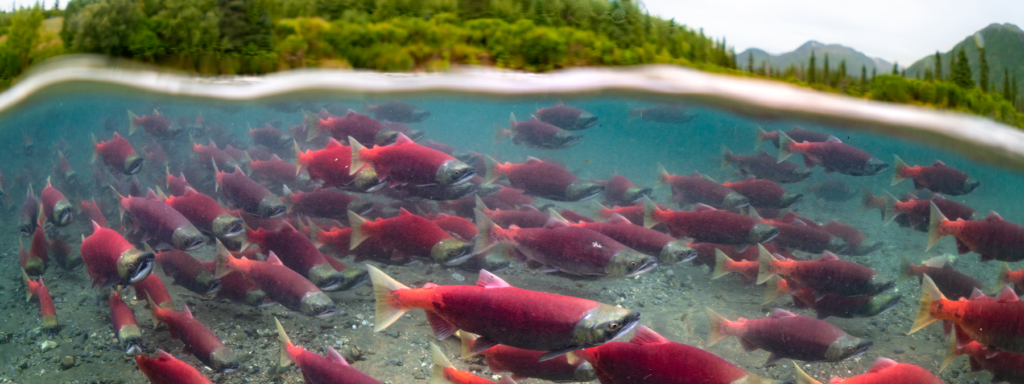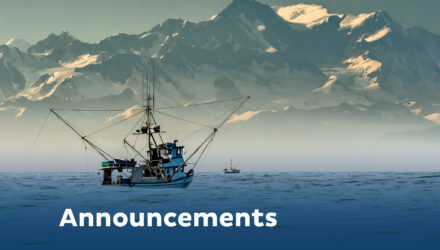Counting Fish: Dedication to Salmon Sustainability


Wind in her face, the fisheries technician pushes her hat down and zips up her bright blue rain jacket to its collar as she cruises up the Naknek River headed to work for the day. As she rounds the familiar bends in the river, avoiding the submerged rocks and shallow pools, she keeps an eye on the bank in search of a bald eagle perched on a log or brown bear searching for breakfast.
She is headed to a counting tower several river miles from the community of King Salmon, Alaska. There, she’ll spend her day counting the fish that swim by using a hand-held counter.
Whether it occurs on a counting tower like the one on the Naknek River, or by weir, sonar or by air, counting salmon is one key tool within Alaska’s robust fisheries management regime. Ultimately, fisheries technicians help the large team of biologists and managers working together ensure the long-term sustainability of Alaska’s iconic salmon run.
Fish counts help managers gauge the strength and timing of the salmon ‘run’ (or group of fish headed back to swim up river to spawn each year), which allows biologists to make informed decisions when opening and closing the commercial salmon fishery in individual areas throughout the season. The data collected through these counting tools enable fishery managers to allow more fish to be caught when returns are strong, and restrict or close fishing when escapement is weak, and it enables scientists to notice trends over time, which helps ensure runs are safe and thriving into the future.
Salmon are anadromous species, meaning they hatch in freshwater, where they depend on high-quality habitat for a year or more (depending on the species) to grow larger before they migrate to the ocean. There, they feed and grow rapidly for a number of years in saltwater. When it’s time, they return to the very same river in which they were born to spawn the next generation before they die. With a lot of coordination, dedication and some luck, many will be counted on their upstream journey back home to spawn.
Commercial fishermen harvest the salmon as they make their way back into the freshwater, which is where the term ‘escapement’ comes into play. Enough returning salmon must be allowed to escape the fishermens’ nets and reach their spawning grounds. Adequate escapement numbers sustain the salmon populations as well as the ecosystem that relies on them, including brown bears, eagles and the tundra, forests and streams, which gain nutrients from the decomposing remains of salmon after the animals’ supper. Biologists set a minimum number of salmon needed to return to freshwater to ensure the fishery will thrive for generations to come.
In streams and watersheds across the state, the many counting tools employed by Alaska’s fisheries managers ensure we’re allowing the correct number of salmon back into the streams so that their impressive life cycle may continue. Biologists are one key cog in the wheel – working to ensure all Alaska’s fish are counted and monitored for the sake of the long-term sustainability of Alaska’s wild salmon and other species. Though salmon are top of mind for many, this level of science and data-driven management is applied all over Alaska for various species.
Despite the hard work it entails, many who love the job are more than adept scientists. They also appreciate the time spent on Alaska’s beautiful, wild waters, a reverence that may be just as integral to the process as the counting technology itself.



